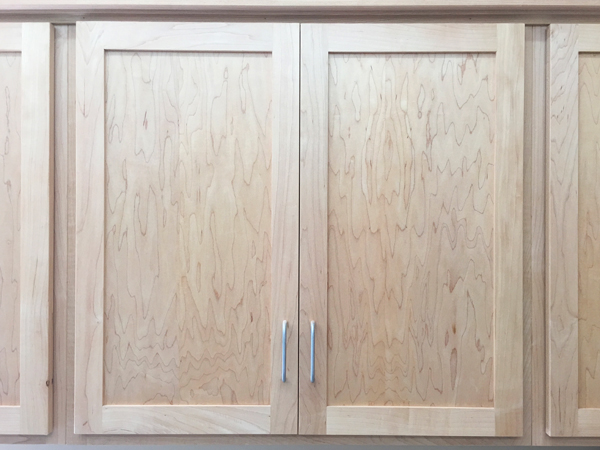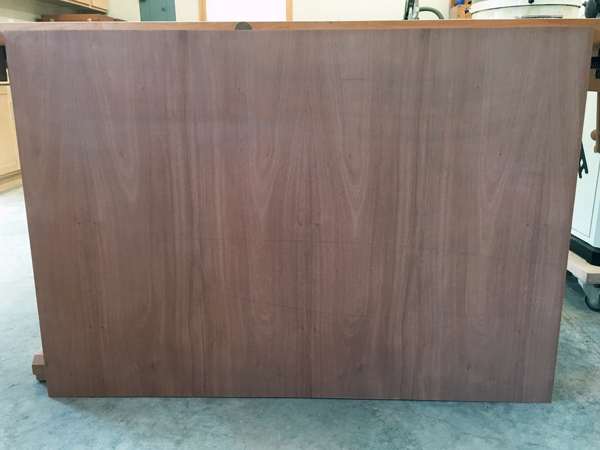
When buying plywood, what is the difference between rotary-cut veneer and plain sliced veneer? The plain sliced sure seems to be a lot more expensive, even for the same species.
Tim Inman: This is a question that could make a whole semester’s worth of discussion. The short answer for here is: Flat cut or plain sliced veneer is a lot more work and a lot more involved from tree to cabinet, so it costs a lot more. First is the way the log is cut. For rotary-cut veneer, envision a roll of paper towels being unwound from the holder. To cut the veneer, the log section (flitch) is mounted in something akin to a giant lathe. The knife is advanced into the spinning log a few thousandths of an inch per revolution (the thickness of the veneer required) and off comes the veneer in a huge continuous sheet. Just like a roll of paper towels being unwound, the log unwraps into yards and yards of veneer. Quick and cheap, but ugly.
As for the plain cut, the log is mounted onto a giant slicer and passed over a huge knife. Like a slicing machine at the local butcher shop cutting roast beef or cheese, each pass of the log cuts one slice of veneer. Each of those slices is caught and individually stacked in exactly the order it is cut from the flitch. Then it is all dried and graded to sell. Each slice keeps its place relative to its neighbor throughout the entire process. This is slow, painstaking and, hence, expensive. But it is much prettier!
And then there are all kinds of other patterns and ways to cut the log, each giving its own benefits and detractions. Rotary cut equals yards of paper towels. Plain cut equals fine stationery sheets stacked neatly in a stack.
Chris Marshall: Rotary-cut face veneer looks nothing like flatsawn lumber, as Tim points out. And I agree: the swirly grain pattern is pretty surreal. But, for some applications, like the center panels of the cabinet doors shown above, I think the rotary grain pattern works OK. (These are my shop cabinet doors, by the way. Their grain pattern on a shop fixture like this really doesn’t bother me.) The plywood I sourced for these cabinets was good quality and from a reputable source. So, rotary-cut veneer isn’t relegated only to “cheap” plywood. However, for fine furniture, I sure wouldn’t choose rotary-cut veneer if the plywood is going to be showcased. I’d go with a flatsawn veneer, like the mahogany plywood in the image below, even at greater cost per sheet. It just looks a lot more like edge-glued boards, doesn’t it? Sometimes, you almost can’t tell the difference in the finished piece.







